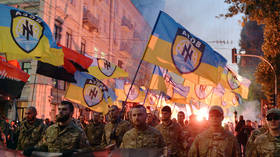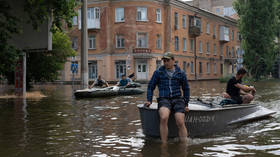Taking a dagger to the ‘soft underbelly’: How the West has opened yet another front against Russia
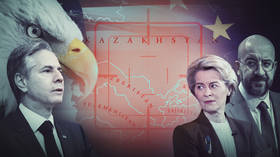
In the first half of 2023, both the European Union and the United States were noticeably active in Central Asia – which is regarded by some as Russia’s “soft underbelly.” Many Western European and American politicians and diplomats frequented the region and attempted to pull the ex-Soviet republics of Kazakhstan, Tajikistan, Uzbekistan, Kyrgyzstan, and Turkmenistan over to their side in the ongoing conflict with Moscow.
The West wants to convince those states to support sanctions on Russia and block parallel imports to the country. It has promised compensation for financial losses. Moreover, Western European leaders see the likes of Kazakhstan as a source of natural resources that could potentially replace Moscow.
With all this recent attention, Central Asia is becoming increasingly aware of its own political importance – but will this lead it to break ties with Russia, as the West hopes?
Frequent guests
Last week, the 10th EU-Central Asia High-Level Political Dialogue was held in Astana, the capital of Kazakhstan. This rather minor diplomatic event was devoted to creating roadmaps for the resolutions adopted at the much larger summit attended by Central Asian leaders and the President of the European Council, and held in the Kyrgyz city of Cholpon-Ata in early June.
Over the past year, visits by the President of the European Council Charles Michel to Central Asia – a region which until recently has been of very little interest to Brussels – have become regular. The very first EU-Central Asia summit attended by the Belgian took place in Kazakhstan less than a year ago, in October 2022 – just eight months after the start of Russia's offensive in Ukraine. The next summit involving the leadership of the EU and the five Central Asian countries will take place in Uzbekistan next year.
It may look like this year's event is a response to the inaugural China-Central Asia Summit held in Xi'an in the second half of May. But in fact, Beijing seems to be lagging behind its Western European competitors who held the EU-Central Asia Economic Forum in the city of Almaty, Kazakhstan, at the same time. Their was attended by high-ranking representatives of their governments – along with people from the European Investment Bank, the European Bank for Reconstruction and Development, the OECD, and private organizations. Kazakhstan, Kyrgyzstan, and Tajikistan were represented by their heads of government, the Uzbek delegation was headed by the deputy prime minister, and the Turkmen delegation was led by the minister of finance and economy.
Representatives of the US State Department have also made a considerable number of trips to Central Asia. In February,Secretary of State Antony Blinken visited Kazakhstan and Uzbekistan. His assistants at the Bureau of South and Central Asian Affairs, Donald Lu and Uzra Zeya have also been frequent guests in the region. In March, EU Sanctions Envoy David O'Sullivan visited Kyrgyzstan. In April, he made a working visit to Kazakhstan and Uzbekistan accompanied by Elizabeth Rosenberg, Assistant Secretary for Terrorist Financing and Financial Crimes at the US Department of the Treasury.
Interaction between Washington and Central Asia mainly occurs within the framework of the “C5+1” format. It originated in 2015, when former US Secretary of State John Kerry launched a dialogue at the level of the foreign ministers of five Central Asian countries and Washington. Since then, meetings between the US State Department and these countries have been held annually.
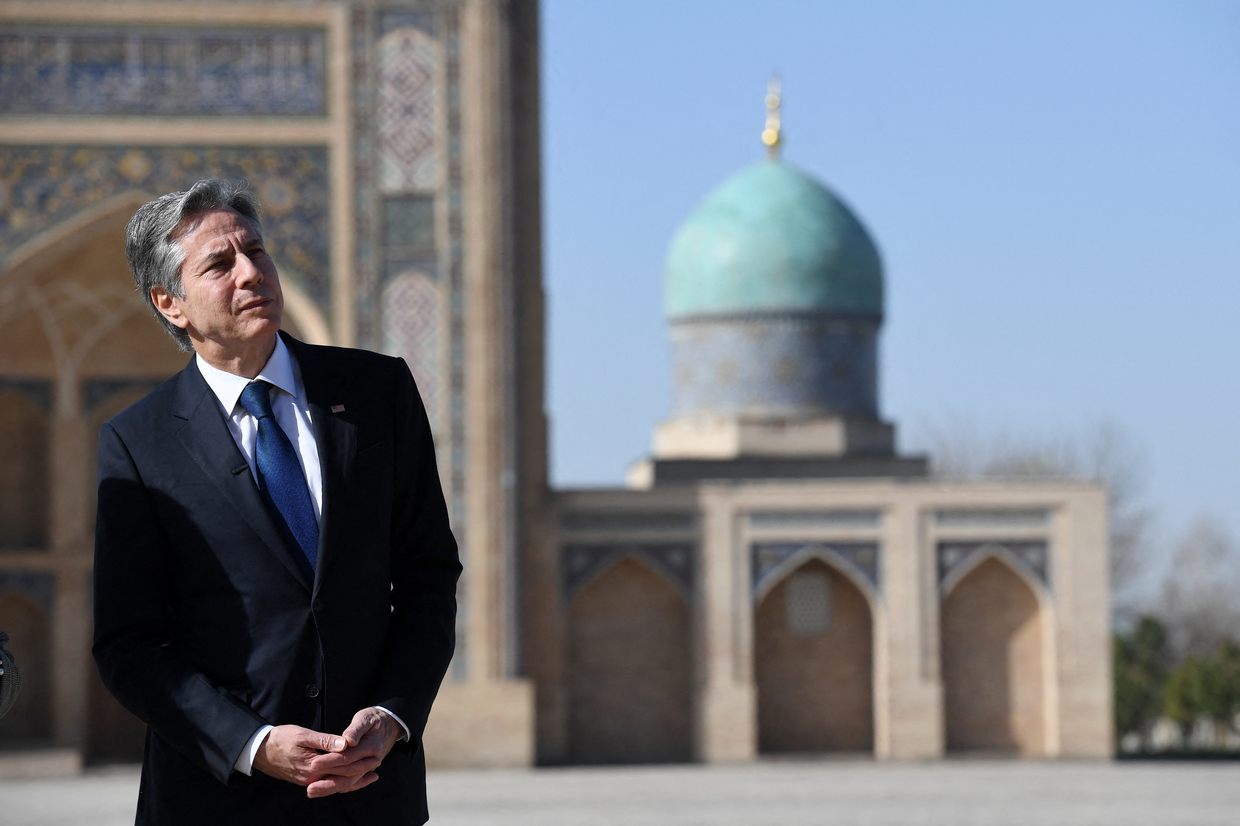
The purpose of this cooperation is no secret to anyone. From the project’s earliest days, pro-Western media in Kazakhstan admitted that it is “more of a ‘1 + C5’ format” and is “another structure proposed by an external player seeking to bring the Central Asian states under its orbit of influence.”
But why have contacts between the West and Central Asia become so frequent and regular recently?
Old ties, new goals
After the start of Russia’s military offensive in Ukraine, in February of last year, the US and the EU introduced several packages of sanctions against Moscow, including restrictions on the import of hundreds of goods from Western countries. In response to the restrictions, the Russian authorities legalized parallel imports – i.e., without the permission of the trademark owner. Such trade rom Russia's neighboring countries increased a hundredfold and by the end of last year, 2.4 million tons of goods worth over $20 billion had been brought into the country using this mechanism.
According to Kazakhstan's edition of Forbes, exports from the country to Russia rose by 25% last year compared to 2021. The Financial Times indicates that the number of washing machines exported from Kazakhstan to Russia rose from zero in 2021 to 100,000 in 2022. The export of computer equipment, monitors, and projectors amounted to $375.4 million, and shipments increased more than 400 times over the past year, a Kazakh journalist reported.
At the end of April, speaking at an exhibition in the capital of Uzbekistan, Russian Minister of Industry and Trade Denis Manturov noted that the trade turnover between Russia and Central Asia had increased by 15% last year and amounted to over $42 billion. Central Asia is one of the world’s leading regions when it comes to the growth of trade with Russia. For example, trade turnover with Uzbekistan has grown by more than 25%.
It is impossible to say that this growth is only due to parallel imports. However, such a surge has never been observed previously.
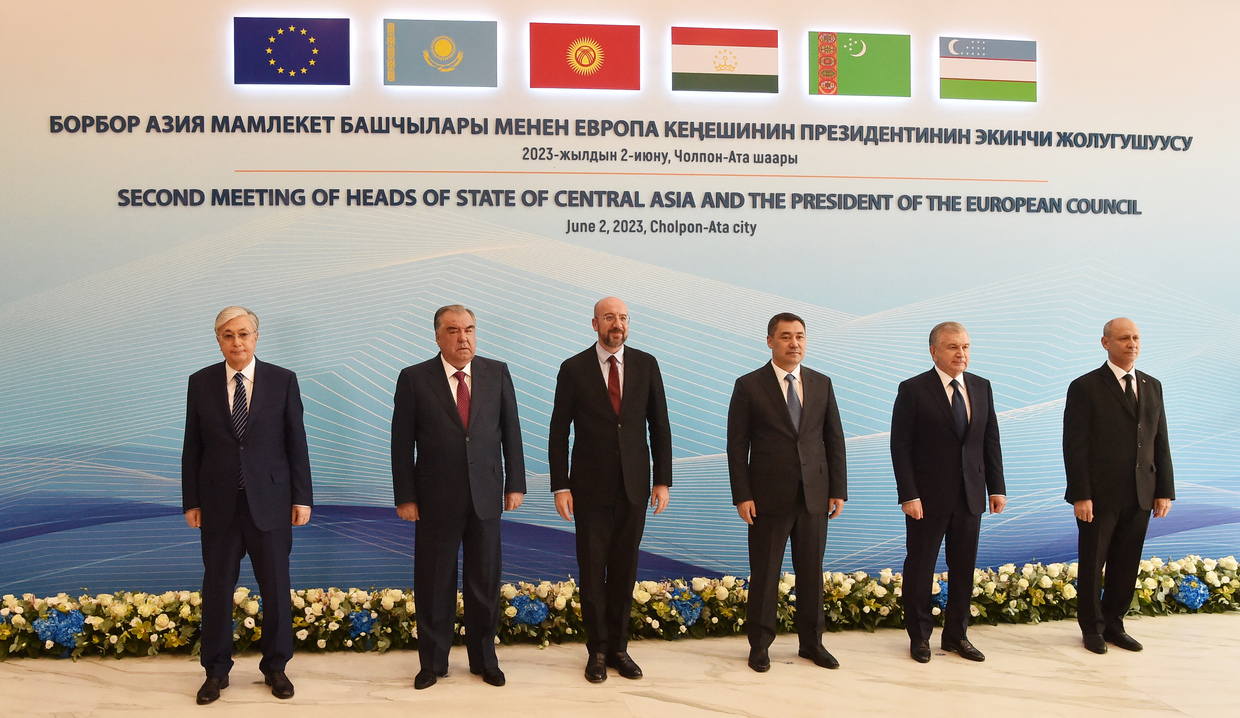
Indirect evidence shows that the Central Asian countries are trying to get the most out of the opportunity to meet Russia’s import needs. In April, the region’s warehouses were almost completely full and rental rates increased several times. By the beginning of spring, demand from Russian companies increased by 40-50%, to almost 400,000 square meters. At the time, the business media unanimously concluded that this was directly tied to setting up logistics chains for parallel imports to their huge neighbor.
Thus, the US and the EU are doing all they can to prevent Central Asian states from being Russia's main partners in avoiding sanctions.
Noting that in 2022, exports of goods from the EU to Kyrgyzstan increased by 300% in general and by 700% in the field of advanced technologies and dual-use items, Kyrgyz political analyst Azamat Osmonov has pointed out that Brussels is growing irritated.
“Western representatives do not believe that the consumer appetites of the Kyrgyz people have suddenly grown to such an extent,” the expert said.
Carrot and stick
At the EU-Central Asia Summit in June, Michel promised the leaders of the five former Soviet republics that Brussels would not impose sanctions should their countries violate the restrictions against Russia. However, completely different rhetoric was heard during the EU-Central Asia Economic Forum, a few weeks before.
In addition to the traditional green agenda – as well as transport and digitalization issues – some topics that had nothing to do with economics were also raised at the event. Despite the assurance of Brussels that the goal of the summit was to establish trade relations and investments, the conflict in Ukraine became one of the main topics.
Vice-President of the European Commission Valdis Dombrovskis threatened to prevent the import of sanctioned goods to Russia via third countries and promised to “identify those organizations that continue to undermine our efforts” and punish them.
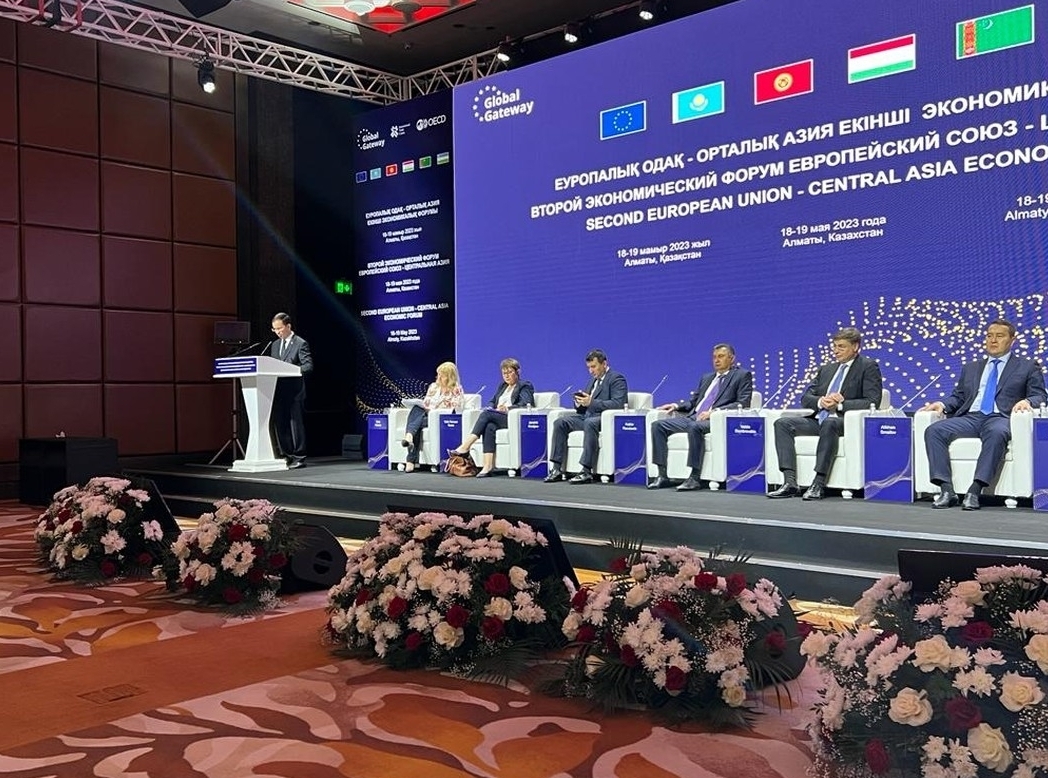
In the summer and fall of last year, the EU repeatedly offered to compensate the trade losses of certain countries (including in the Central Asia region) and invited them to support sanctions on Russia. But in recent months, Brussels’most substantial offer amounted to a proposed investment of €20 million ($22 million) for building satellite ground stations. Moreover, this May, instead of offering to make up for broken trade ties with Russia, the EU had only more threats for the refusal to follow US and EU sanctions against Moscow.
The US has been even more active in using its ‘stick.’ Back in April, its Department of Commerce imposed export restrictions against companies from Russia, China, Uzbekistan, Armenia, and other countries “for trying to evade export control[s]” and purchasing American goods for the needs of Russia. Following this, the European Commission also proposed sanctions against companies from several countries, including two Uzbek and one Armenian, for supplying dual-use items.
The efforts of the EU and the US have partially influenced Kazakhstan, which has introduced several bans on parallel imports. In April, to avoid secondary sanctions, Astana launched a tracking system for all goods brought in and out of the country. This has also complicated deliveries from Uzbekistan to Russia, since the cargo travels via Kazakhstan. As a result, supply chains are moving to Kyrgyzstan, China, and the UAE, and the cost of the affected imported products in Russia may increase by 10-12%.
At the end of May, Russian Deputy Foreign Minister Mikhail Galuzin warned the Central Asian countries they faced significant losses should they follow through with sanctions. He stressed that the Russian side does not dictate foreign and domestic policy to other states, but only in those cases “when it does not go against mutual obligations, including those within [the framework of]the CSTO [a military alliance], the EAEU [an EU-esque trading bloc], and the CIS [a group for former USSR members]”. He expressed confidence that the Central Asian states are well aware of this.
“The artificial destruction of ties with Russia can result in more serious damage than the expenses from the notorious secondary sanctions,” he said at the Central Asian Conference of the Valdai International Discussion Club.
Are things really that bad?
Russian political analysts believe that Central Asia will remain important for the West not only in terms of anti-Russia sanctions, but also as a springboard for possible future military action against Moscow.
“The West is interested in deploying its military bases in the Central Asia region to threaten Russia’s ‘soft underbelly’. Moscow is not prepared for major military action here, unlike at its western borders, where the enemy usually comes from,” warns Maxim Kramarenko, head of the Institute of Eurasian Policy. “This may be a springboard used for posing a real threat to Russia.”
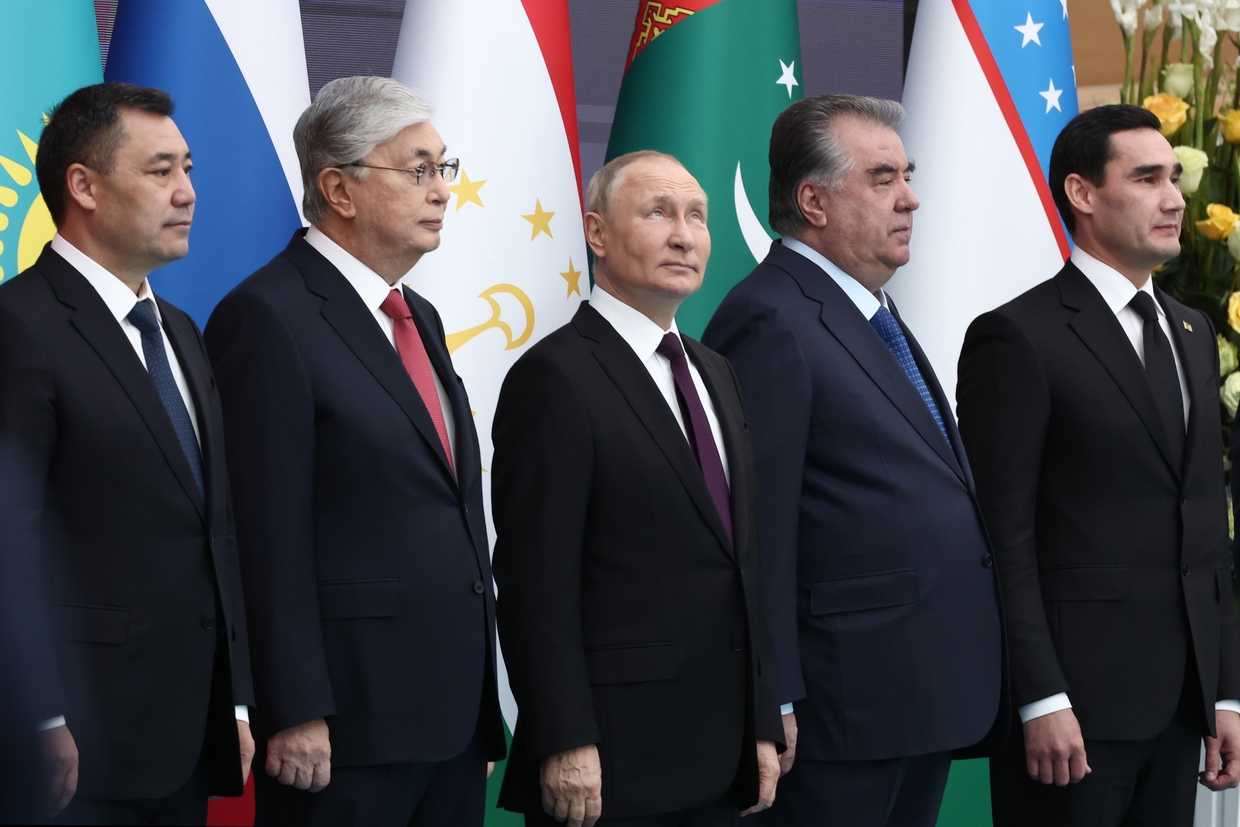
So far, this warning sounds premature since the West cannot even force the region to fully comply with sanctions. Central Asia reaps huge benefits from the current economic situation, whereas if it refuses to cooperate with Russia, it’s the countries within its own region, and not Moscow, that will suffer the main blow, says Central Asia expert Azamat Osmonov.
“Russia receives electronics, agricultural products, medicine, spare parts for cars, and other technology through these countries. If it becomes possible to ban these goods, the Russian market will quickly feel the shortage. But Central Asia will lose out more. Russia can also supply these goods via other post-Soviet republics, not to mention China and Türkiye,” he said.
Moreover, according to Alexander Knyazev, Doctor of Historical Sciences and a leading researcher at the MGIMO Institute of International Studies of Russia’s Ministry of Foreign Affairs, the severe consequences that Western countries threaten Central Asia with are greatly exaggerated.
“The threat of US and EU secondary sanctions and their probability are exaggerated, and so is their significance. In political terms, such sanctions against any country in the region would automatically make that country join the camp of Western opponents and make it a closer ally of Russia and perhaps China,” the expert believes.
He adds that “the West’s attempts to turn the countries of Central Asia against Russia, as it happened with Ukraine, will not be successful.”
An uneasy future
The West may not currently have the ability to drag Central Asia over to its side, but this does not mean that it will give up on such attempts in the future. In this respect, Western countries are using their traditional “soft power” tools: Non Government Organizations (NGO) and media outlets.
“In Bishkek alone, 18,500 such organizations are registered. Contrary to the constituent documents, many of them interfere in the political life of the country, including by financing the organization of political rallies in Kyrgyzstan,” says a note to the draft law on the tightening of control over NGOs that has been submitted to the Kyrgyz parliament.

The concern of local parliamentarians, however, hasn’t stopped the work of these cut outs. In early June, the US Agency for International Development (USAID) allocated a first tranche worth $12 million to the non-profit organization KazAID, which is to distribute the funds among Kazakh NGOs in order to “increase the resistance of society to disinformation” and “increase the media literacy of the population.”
This is the first installment of the planned $50 million package indicated in the program’s budget estimate. Moreover, another $15 million was spent on USAID projects in Kazakhstan in 2022.
A significant part of this money goes into funding local journalists who go on to promote a pro-US agenda among the population. For example, one of the recipients of USAID grants is the Central Asian Media Program (MediaCAMP). It is overseen by the American NGO “Internews,” which was banned in Russia in 2007.
This NGO has comfortably settled in Kazakhstan where it has been active for over five years and “works with partners from Central Asian media outlets, [the] academic community and civil society.”
The scope of its activity is very broad. According to the USAID website, “the project has trained 2,830 media professionals across” Tajikistan, Uzbekistan and Kazakhstan. Moreover, it reports that “over 10,500 youths, adults, and seniors from the three target countries… have participated in [so-called] media literacy activities.”
Just how soon the media workers and grant recipients concerned will begin promoting a policy of separation from Russia in their own countries remains unknown. However, there is no doubt that sooner or later this is bound to happen. After all, the official “US Strategy for Central Asia 2019-2025” plainly states that “Central Asia is a geostrategic region which is important for the interests of US security.”





